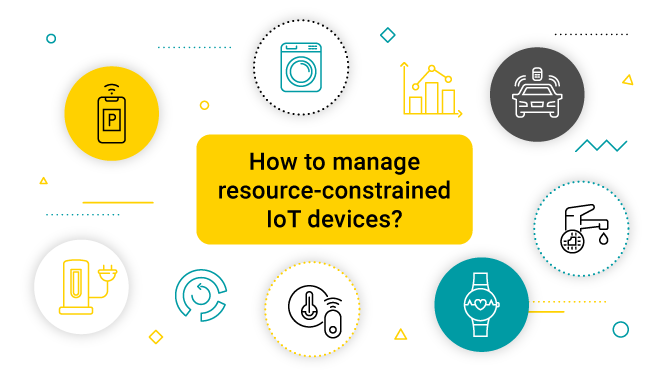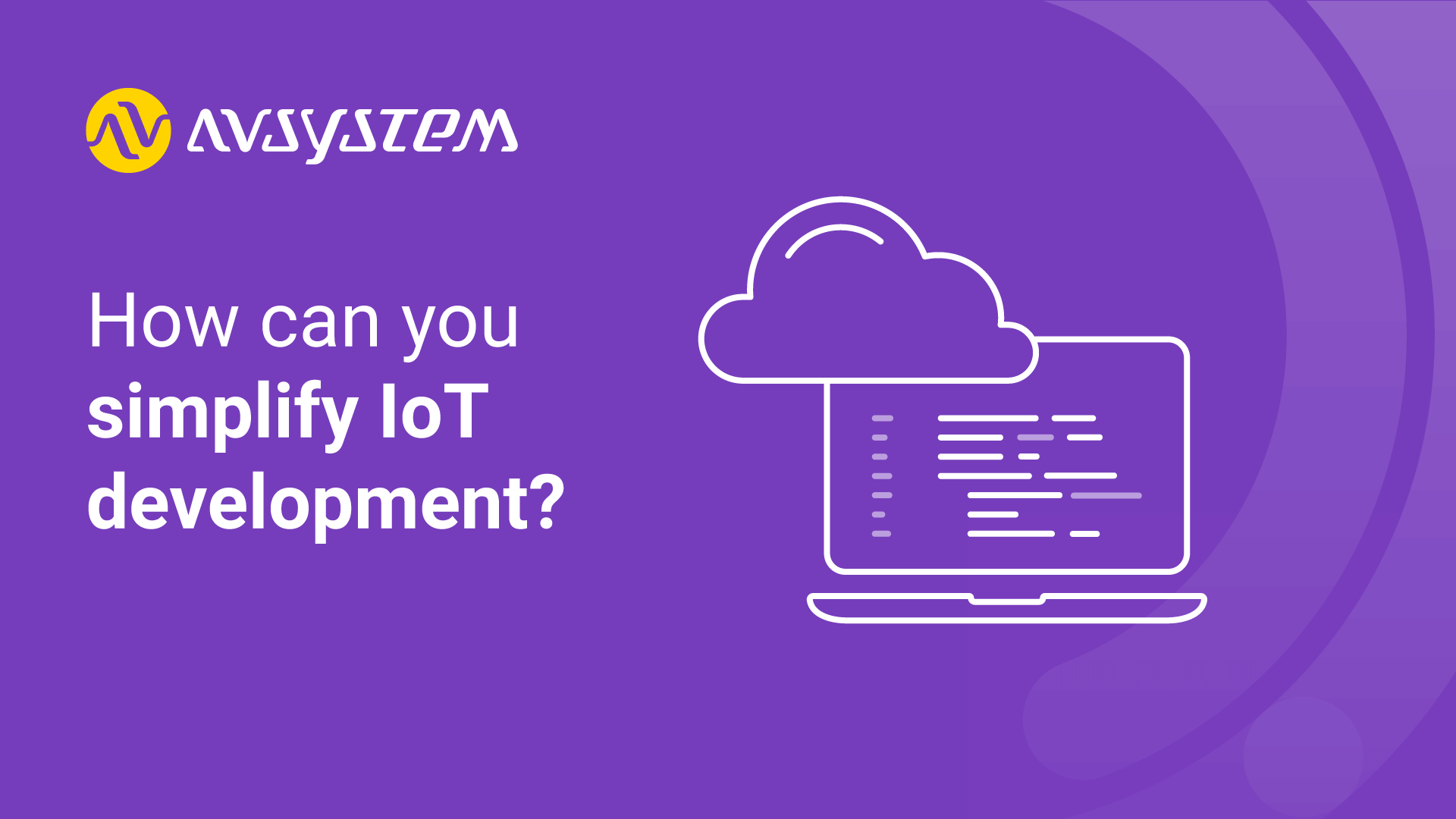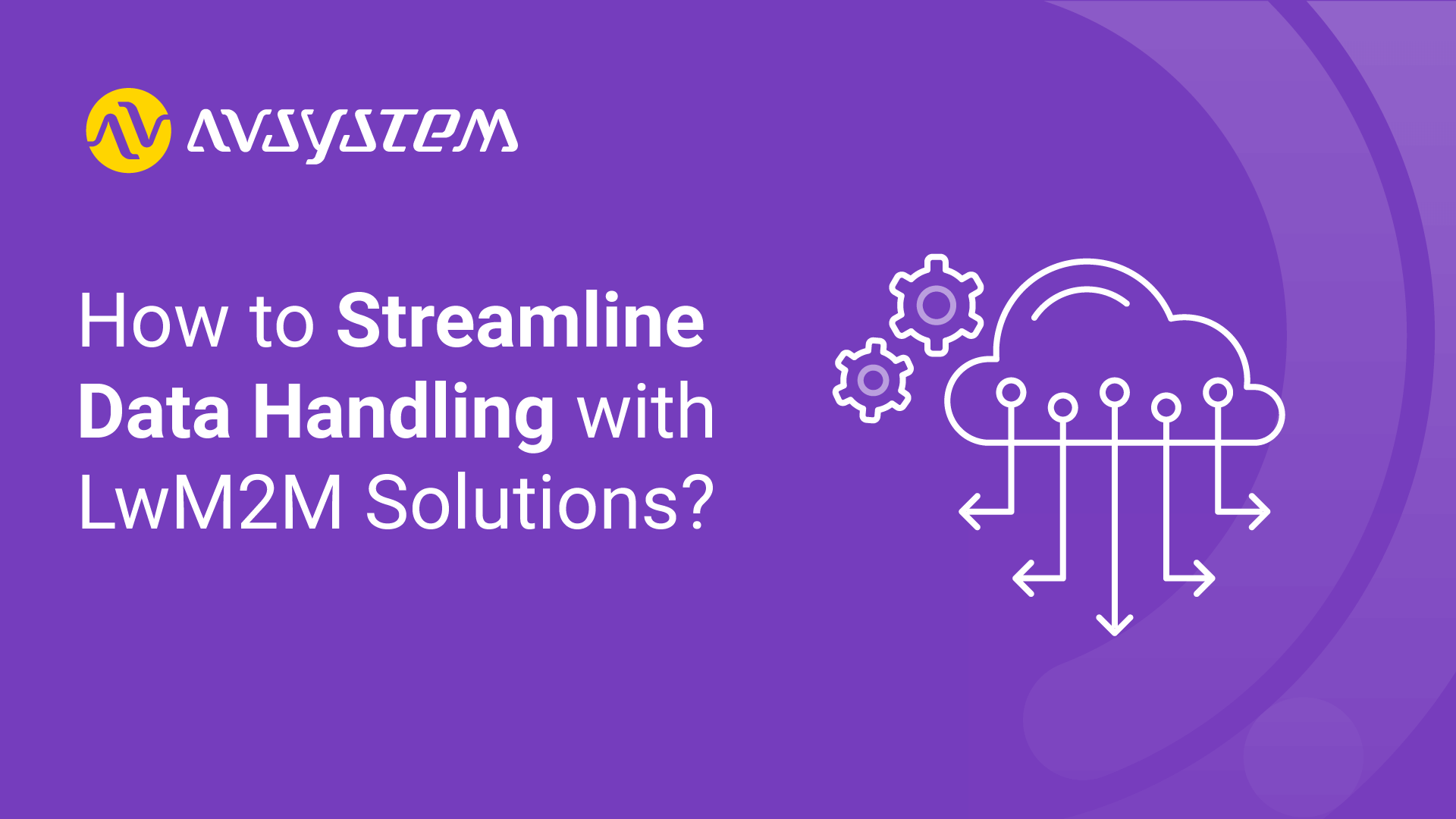How to manage resource-constrained IoT devices?

The gist of IoT is about small things gathering big data. But while it is quite clear that downsizing smart assets is a matter of technological and economic necessity, the question of their effective management and maintenance still leaves a lot of doubt in the mind of any IoT stakeholder.
Viewed in a bigger picture, the Internet of Things involves extending remote connectivity beyond standard devices, such as desktops, laptops, phones and tablets, to any range of physical devices and everyday objects that are traditionally dumb or not Internet-enabled. Integrated with technology, they can communicate and interact over the Internet while being monitored and controlled remotely.
Resource-constrained devices at a glance
But giving it a closer look, how are communication and interaction really achieved? In other words, what makes traditional devices IoT-enabled? Obviously enough, they are not interconnected all by themselves — all the smart traffic is conceived within a dense net of sensors, microcontrollers and actuators attached to them that gather data, share them and transmit them down the IoT pipeline for further processing. In such a case, there are no significant limitations as for the energy consumption or processing power for such use cases, since the IoT gear, as a rule, takes its power from the base device.
So far, so good, but there are other scenarios that bring more complexity into the picture. Weather conditions monitoring at airports, marine cargo logistics or agricultural automation are just examples of a great deal of projects where there may be no external source of power to fuel the workings of smart devices. Therefore, when acting as a standalone device in the field, a pin-sized sensor must inevitably boast a high degree of sustainability and independence from the poor infrastructural conditions. Thus, such devices came to be called resource-constrained.
To attempt a broad definition of the term, it can be stated that resource-constrained devices are those that by design have limited processing and storage capabilities to provide a maximal data output possible with a minimal power input while remaining cost-effective. Due to their frequent application as smart equipment operating in the field, in harsh conditions or/and hard-to-reach places, they usually run on batteries to maintain the balance between the effective span of their lifetime and the potential costs of device replacement.
Example applications of resource-constrained IoT devices
Let’s take a quick tour around some examples of popular use cases involving resource-constrained IoT devices to see where they are employed to their best capacities.

Many agricultural processes can be tracked, monitored, and controlled remotely to increase production and efficiency, so it is quite natural that farmers and crop producers are turning to the industrial Internet of Things (IIoT) for solutions. With the help of resource-constrained devices such as sensors and actuators, farmers can monitor such crop field parameters as temperature, light, humidity, soil moisture, and automate the irrigation systems.

The annoying problem with the weather forecasts of today is that it is usually too general, which may not only mean inconveniences for individuals (a ruined trip to the countryside), but also major consequences for a number of services like firefighters (not being able to incorporate micro conditions, like the wind, in case of wildfires), and enterprises, like airlines (being at a loss when scheduling deicing at airports and avoiding harsh conditions in planning flying routes) or logistics (not having enough detailed information to scheduling shipping routes). Battery-run smart weather sensors located in the field, often in hard-to-reach places, can report weather at micro levels, which helps to introduce more granular weather data into the existing weather forecast models.

Talking about logistics, it is now hardly imaginable that the transported cargo may be left without being tracked and monitored by various resource-constrained devices. In case of road transport, the solution device-wise seems quite simple, as the devices can be included in the power circuit of the vehicle itself to create a wireless sensor network that reports real-time traffic information, vehicle and cargo status, or even driver’s level of fatigue. But in scenarios involving, e.g. maritime logistics, resource-constrained sensors must enter the scene. Enabling the monitoring of conditions inside as well as outside a shipping container, as well as its location, they help maintain the precious cargo in good shape.
Achieve IoT project success faster with our expertise.
Speed up your time to market using LwM2M standardization and pre-built integrations for hardware and the cloud.
Management of resource-constrained devices
Several challenges can hinder the successful implementation of an IoT system and its connected devices, including security, interoperability, power/processing capabilities, scalability and availability. Many of these can be addressed with IoT device management, for instance by adopting standard IoT protocols like Lightweight M2M, or using a comprehensive IoT device management platform offered by a reliable provider as part of a SaaS model.
Device management helps companies to integrate, organise, monitor and remotely manage smart assets at scale, providing critical features to maintain the health, connectivity and security of IoT resource-constrained devices throughout their lifecycle. However, safeguarding IoT devices and the networks to which they connect can be a challenge due to the variety of devices and providers, as well as the difficulty of provisioning, ensuring security and establishing reliable device-server communication for devices with limited resources.
The challenges, however, can be overcome with the help of a comprehensive and reliable IoT device management platform. One of the vulnerable aspects of every resource-constrained device is provisioning. Quick, failproof and safe process of introducing the device into the system that a great DM platform offers can save IoT system engineers countless hours of resolving connectivity problems that otherwise would not occur in the first place.
But probably the most burning issue, also connected to the question of device provisioning, is establishing security and failproof authentication of a resource-constrained device. However, with the help of LwM2M, the protocol specializing in serving devices with limited resources, achieving the highest state of security with the lowest use of data is not only possible but even effortless.
Lastly, there comes the question of providing firmware and software over-the-air updates. As these processes are as essential as they are complex, they require a dose of special treatment. And LwM2M also caters for that, ensuring a minimal overhead in message exchange, a reliable resumption mechanism in case the connection is lost (automatic resumption of the FOTA process without the need to re-download the firmware file). All of this significantly reduces battery drain caused by increased message weight and intensity occurring in case of inefficient FOTA and SOTA processes.
With the growing trends in downsizing and cost minimization in the Internet of Things deployments, the use of resource-constrained devices seems to be a wave of the future that cannot be held back. The challenge now for the IoT industry experts, service providers and project stakeholders alike is to keep these smart micro assets secure, reliable and effective.
Recommended posts
- How can you effectively tackle the challenges of IoT development?
- IoT communication protocols explained [with measurements for NB-IoT]
- How to Streamline Data Handling with LwM2M Solutions?
Subscribe to stay in the loop with all our latest content:
Recommended posts


![IoT communication protocols [with measurements for NB-IoT]](/media/avssite/news/Communication-Protocols-Comparison_cover_new.png)
